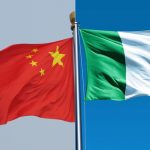Feature/OPED
9 Proven Steps CEOs Can Take to Make Business Strategies Work

By ‘Muyiwa Osifuye
In our private lives, we set out personal goals and objectives. Within a family, there are expectations — be it nuclear or extended (depending on the social mores of a place). Every head of the family or a single parent, wish for a certain outcome and, oh yes, the wise ones know that things don’t go as expected.
Imagine a racing car on the track, no matter how well tuned or powerful it may be, without a conscientious driver behind the wheel, will not get to the finishing line. (I am aware there are now driverless vehicles in the offing, by the way).
Likewise plotted flight charts alone won’t carry aircraft passengers to their planned destination. There must be capable pilots in the cockpit whose job is to take them to their destination safely.
But how come many organizations don’t get to where they have planned, despite the best of strategies?
What makes them fail to achieve their strategic goals? I will not quote a specific figure of the failure rate here, as research findings differ widely. However a finding of the collective rates can be looked up at researchgate.net.
In my reckoning, there are two major reasons why strategic plans fail.
These are: the bossy mindset of some CEOs, decision-makers and leaders and; a nonexistent system of execution or implementation to meet the set-goals.
The bigger the organization gets, the tendency that some top executives over-delegate and fail. They wait behind the big oak table, expecting the organizational structure to drive itself to its destination.
But leaders need to be more involved, though this is not to support micro-managing.
If you send your kids to school, that is a responsible undertaking as a parent. But it is a smart thing for a wise parent to pay occasional visits to the school; to ask questions and get more information. The periodical result cards are not enough to make full and accurate judgement on the progress of that kid.
Some leaders would rather wait to react to an unfavorable outcome. Unfortunately this is a fatalistic mindset. And it is also an unprofitable way to get results, more so in our fast-changing world. And no organization is spared of failure, if it cannot institute a proper implementation system in agreement with its top executives and the rest of the workforce. It is better to be active rather than being reactive.
Having said that, then, one may ask: what then should be done to bring a strategic plan to reality?
Here are nine steps that must be instituted to achieve results in meeting strategic goals:
Develop The Leadership Mindset
The CEO and the top leaders must be more engaged with their subordinates, at their respectable levels, in pushing for results. Since you cannot do it all, you must nurture and raise leaders that would work with you. Their contribution would introduce more objectivity and accuracy in decision making.
On a scheduled basis, you would need to walk down to the “factory floor” at the units or division level. Here you feel things and listen to their opinions and comments. Here most of your job would be; asking questions. No wonder, the highly revered and successful PepsiCo Chairman and CEO Indra Nooyi took time out to visit divisions and even engages business owners who retail their products.
To be a leader whose organization desires to generate good results, the Chief Executive and the leadership can no longer be aloof in their management style.
Many bring into leadership positions some behavioral ineptitude, ignorance and naivety. A top I.Q. or technical prowess garnered over the years may not even be enough to make achieve good results. And topnotch result isn’t a bad idea either, for shareholders and other stakeholders in the organization.
There is also a need to be objective and less sentimental when dealing with people’s issues. The result oriented leaders must be emotional balanced, having behind his or her mind the results expected of the organization.
As a leader you must make things happen. Goal oriented Executives execute. No excuses… As such, they must stay less behind the big table to get the ship of enterprise to reach its planned destination.
Build The Implementation System
Your organization will design and document a set of activities, actions and processes geared towards making the strategic plan a reality. It will be a living system since various internal and external variables won’t be static over time, even with the time frame as planned.
All activities must be well coordinated with the allocated resources and the workforce to accomplish the strategic goals.
The system of purposeful action will be replicated across the different departments and divisions of the organization. These will be the sub-systems at various units or divisions. External factors must be considered first before the internal exigencies; and both built into the implementation framework. Areas of conflict will be eliminated through continuous communication and feedback loops.
The system should be able to pinpoint issues that need to be addressed urgently.
For example; are there issues about hiring and wrong staffing?
Will you bring in needed skills to meet new objectives?
How does a sub-system of implementation in various units or division read the marketplace and consumer’s trends? And other factors such as technology, suppliers, and regulations; name it…
At every leverage point within the overall operational system, the CEO and his or her top team must be able to put a finger on and understand what is going on, in a timely manner.
Encourage Staff Participation
There is a need to institute both a formal and informal set of events to get comments from the workforce. Specially designated leaders across units, departments or division will meet on a scheduled basis to discuss the strategic plans and what must be done to achieve them.
The CEO hand-picks a top team of advisers which should include specialists at the lower rung of the ladder if need be. They help the CEO and the top executives spot each other’s blind-spot so that more informed decision can be made after these joint sessions.
Informal meets such as executive and staff retreats is a good idea if it has cost-benefits. Powerful ideas do come up when everybody is allowed to express himself in a relaxed atmosphere. The CEO or his top team should be at such events. The Executives are to ask good questions and be more of silent listeners. Once agreed upon, the valid ideas are put into action by the CEO and leaders at various units and divisions.
It now becomes a collective assignment for the success of the organization.
Allocate Resources
The staff must be supported with what they need towards the set goal. Support would come in difference shades. Where necessary additional skills will be brought from outside. Some staff may need further training or mentoring to implement new ideas. Within the workforce, resources should be allocated to develop innovative ideas for competitive edge.
Consultants may be brought in to give an objective appraisal and proffer solution in many cases where time is of essence. This also helps for clarity where internal politics and doubts on feedback may slow down the CEO and the top leaders in coming to a decision.
Ad-hoc arrangements or permanent alliance with technical partners in certain areas that the company lack expertise should also be effected, after due diligence. In extreme cases acquiring another firm may be the most effective decision rather than inventing the wheel in-house.
In essence, where a specific outcome is feasible and profitable, resources must be deployed to make it a reality.
Align Organizational Behavior And Culture
Behavioral patterns that could stall the implementation process across board must be studied and where necessary adjusted. There must be an alignment of organizational culture that supports activities that ensure that the strategic goals are met. The inevitable internal politics must be tamed.
The carrot and stick approach may be applied where necessary to induce collaboration as set targets must be met.
At the individual and group levels, persuasion and continuous dialogue must be the tactic to be used. Change takes time but smart organization and resourceful leaders work with their people to carry them along to create a more successful business organization.
Habits die hard and since human beings are not robots; but the leadership would provide the best solution to get their staff cooperation and commitment.
No staff commitment, strategic failure is a matter of time. A good dose of continuous explanation and mutual understanding with the rank and file on the overall objective of an organization would help a great deal in execution.
Manage The Workforce
As humans, our idiosyncrasies, biases and beliefs must be taken into consideration. Since people would drive the system, then they ought to be well managed. And pruning of staff may be necessary of those unwilling or unconvinced about the new orientation. The latter with such disposition must be found out and excused from the company.
Years back, I recall a new business I started which was brought down by some old staff whom I thought would pick new skills for higher pay. They scared away the efforts of my highly skilled professional I employed to head the outfit. After two days of throwing the doors open, the new manager simply put a call across to me about his departure and walked away. For other reasons I eventually closed down the outfit. Painful. It was a loss.
While at this, the Human Resources Department must key-in into the implementation system. Some of their activities would need vital contributions from the top hierarchy and other relevant departments before certain decisions can be finalized. It is a very sensitive department since people are the ones that make strategic plans and goals become a reality.
A good reward system must also be instituted. Those who meet set objectives are recognized and rewarded. Those who miss the mark or who seem to be amiss about what is happening, would be investigated to see how they can be helped to perform better. If they fail afterwards, they may have to be given a different task. If they can’t meet up here again, then they should be relieved of their appointment in an amicable manner.
Install Good Communication System
A thorough network of free-flow of information must be designed for the organization. It must be a well thought-out system. The organizational structure should support an efficient and effective flow of information that work in a timely manner.
All tools and resources that will channel vital information between the CEO, top decision-makers and the workforce must be deployed and well managed.
Channels that follow Up-down, across, and between the organization and outside must be well managed.
The accuracy and authenticity of information must be verified for decision making. The nodal points of engagement along information channels must be well managed.
The style of delivery of information must be amenable to all stakeholders for clear comprehension and understanding.
Information is sacred — secondary to human beings – and as such it is very important in our lives and in business management. We must carefully engage with it. It must be clear and understood by the receiver in whatever vehicle or form it is deployed. And the purveyor must not be careless about what is broadcast.
Either way information is channeled; from the CEOs, top executives or within the workforce, communication must be well protected with necessary tools and resources.
Transparency should be entrenched to encourage a sense of belonging, conviction and commitment by employees and their unit leaders. However, in discretionary cases, some information may not be broadcast to everybody from top management.
Understand The External Environment
No business exists in isolation. So the implementation process should feed in from outside to achieve specific outcome. The horizon changes more rapidly than in the past years because of technology.
Technology continuously causes so much change. In its wake, some industries have been subdued or became moribund while new ones have evolved.
The externals would also include the general economy, consumers and social trends. We will also consider regulation, competition, global politics and threats and others. Various trends and players within an industry and outside of it will be monitored.
Having a field tour by the CEOs and his top team across the value chain of the business would throw up some nuggets of useful ideas and unforeseen problems as well as opportunities.
It’s good for management to have an open mind. Strategies may be forced to change, if what you planned won’t go far.
Other top leaders should do the same as foot soldiers of the management in their own capacity. All data are fed into the implementation system which the top management and the CEO would work with.
To achieve strategic goals, there must be a proper engagement with suppliers and other partners to make execution a reality.
It is also a safer bet to engage in a diplomatic manner, influencers that play a major role in your industry. For big organizations, lobbying policy-makers — in an ethical manner — should be done in a timely manner as some policies may derail some strategic plans.
Review Milestones and Feedback
On a continuous basis, there must be a process to determine if milestones are being met and they must be measurable. A value should be put to specific outcome. The various sub-systems within the organization should be accorded relevant criteria of review and feedback.
When all these are carried out, a larger and clearer picture can be seen; to know how specific outcomes and strategic plans have been met.
Where success is achieved, you consolidate on that outcomes.
When the feedback falls short of expected milestones, it is a waste of energy to bark like a General at war. Though engaging in business is a war of sorts – the Chief Executive and his or her top team will go back to review and push for the objectives to be met.
Final Thoughts
Your well-crafted strategic plan is not enough. Your shareholders and other stakeholders hunger for results. You can drive the operational process with your workforce, to bring the strategic goals to a reality.
That is what is expected of you as a leader and Chief Executive, despite the shifting business horizon. It won’t be easy. But being disciplined and focused with your carefully selected team, you can do it.
And your well instituted execution plans would bring the well-crafted strategic plans on paper to reality.
And as Warren Buffett has been quoted, a little bit of the luck could help also. And that’s being pragmatic.
Feature/OPED
Preventing Financial Crimes Amid Mounting Insecurity: Why Following the Money is Now a Survival Imperative

By Blaise Udunze
Nigeria today faces a sobering dual reality: a deepening security crisis and an entrenched financial-crime ecosystem that quietly feeds, sustains, and normalises that crisis. Across the North, Middle Belt, and parts of the South, kidnappers, bandits, insurgent cells, political actors, compromised security agents, and a complex chain of financial facilitators operate within a shadow economy of violence, one that generates billions, claims thousands of lives, and steadily erodes the authority of the state.
For over a decade, security experts and Nigeria’s international partners have warned that no meaningful progress will be made against insecurity unless the financial oxygen sustaining violence is cut off. Yet the country continues to prosecute its anti-terrorism efforts largely through military responses, as though the conflict could be resolved solely on the battlefield. What remains missing is a decisive, transparent, and politically courageous confrontation with the economic networks that make insecurity profitable.
This war is not only about guns and bullets. It is about money.
Money moves fighters.
Money buys weapons.
Money fuels political desperation.
Money underwrites chaos.
Until Nigeria addresses the financial pipelines behind its insecurity, the crisis will continue to reproduce itself.
Kidnapping: The Lucrative ‘War Fund’ Sustaining Insurgency
The rise in mass kidnappings is neither accidental nor spontaneous. It has evolved into a rational, structured, revenue-generating enterprise.
Appearing on Channels TV’s Politics Today in October 2025, Yusuf Datti Baba-Ahmed warned that insurgent and bandit groups now treat ransom payments as reliable “war funds.” The data support his claim.
A 2024 survey by the National Bureau of Statistics (NBS) found that Nigerians paid N2.2 trillion in ransom between May 2023 and April 2024. This astonishing sum does not account for unreported payments made through informal negotiators, mobile transfers, or unregulated community channels.
Kidnapping has matured into a fully formed economy with well-defined roles: negotiators, informants, logistics providers, cash couriers, and security collaborators. Proceeds are reinvested in weapons, motorcycles, communication devices, safe houses, and even land acquisitions.
In the words of a security analyst, “Every successful kidnapping is a fundraiser.”
Sabotage from Within: Keffi’s Explosive Memo and a System Built to Fail
If Nigeria’s external security threats are troubling, the internal compromises are even more alarming.
A leaked memo by Major General Mohammed Ali Keffi accused senior government and military officials of diverting billions of naira earmarked for arms procurement under former Chief of Army Staff, Lt. Gen. Tukur Buratai. Keffi’s allegations included:
– Weapons paid for but never delivered
– Falsified battlefield reports
– Civilian casualties mislabelled to justify inflated expenditures
– Political interference obstructing investigations into terror financing
His claims echoed the earlier warning by Gen. T.Y. Danjuma, who accused sections of the military of working in concert with armed groups and abandoning vulnerable communities.
Keffi’s memo became even more consequential following the 2025 detention of former Attorney General Abubakar Malami by the EFCC over allegations of money laundering, terrorism financing and suspicious financial activity linked to 46 bank accounts.
Together, these revelations paint a disturbing picture: even as Nigerians endure mass abductions, elements within the political and security elite appear to be enabling or shielding the financial networks behind the violence.
Why the Crisis Persists: A Financial Crime Lens
Nigeria’s insecurity cannot be divorced from the environment in which illicit finance thrives. Key enablers include:
- Informal Economies and Unregulated Cash Flows
With over 70 percent of rural transactions still cash-based, terror groups exploit:
– Hawala networks
– POS and mobile-money agents
– Cattle markets and mining sites
– Barter systems centred on livestock and grains
These channels operate beyond the reach of AML/CFT systems.
- Identity Fraud and Weak KYC Enforcement
– Criminal networks routinely open accounts with:
– Fake NINs
– Compromised SIM cards
– Recycled BVNs
– Mule identities
- Collusion within Financial Institutions
The EFCC estimates that up to 70 percent of financial crimes involve bank personnel, primarily through:
– Unauthorised cash withdrawals
– Suppressed Suspicious Transaction Reports (STRs)
– Manipulated internal alerts
- Weak Prosecution and Political Interference
Cases drag on for years, and many evaporate entirely before reaching court often due to political considerations.
- Ungoverned Spaces
Large territories across the North serve as hubs for:
– Arms trafficking
– Illegal mining
– Kidnap-for-ransom camps
– Cross-border smuggling
Public Patience Thins: NLC Moves to the Streets
Public frustration is reaching a boiling point. On December 10, the Nigeria Labour Congress (NLC) announced a nationwide protest scheduled for December 17, citing the “degenerating security situation” and the rise in mass abductions.
The NLC condemned the November 17 abduction of female students in Kebbi, noting that security personnel had been withdrawn from the school shortly before the attack. The union called the act “dastardly and criminal” and directed all affiliates and civil-society partners to fully mobilise for the protest.
This marks a significant shift. For the first time in years, Nigeria’s most influential labour body is placing insecurity at the centre of national mobilization, further underscoring the argument that the current crisis is not simply a security failure but a systemic breakdown of governance, accountability, and financial integrity.
The Financial Engine of Terror: The 23 Suspects Who Moved Billions
A Sahara Reporters investigation uncovered a network of 20 Nigerians and three foreign nationals allegedly linked to the financing of Boko Haram and ISWAP. Their transactions, running into hundreds of billions, were quietly channeled through personal and corporate accounts.
Among those named:
– Alhaji Saidu Ahmed, Zaria businessman: N4.8bn inflows
– Usaini Adamu, Kano trader with 111 accounts: N43bn inflows, N50bn outflows
– Muhammad Sani Adam, forex and precious stones dealer: N54bn across 41 accounts
– Yusuf Ghazali, a forex trader linked to UAE-convicted terrorists, operated 385 accounts
– Ladan Ibrahim, a Sokoto official, is accused of diverting public funds
– Foreign actors included the late Tribert Ayabatwa (N67bn inflows) and Nigerien arms dealer Aboubacar Hima, who moved over $1.19 million.
Strikingly, several of the suspects arrested in 2021 were quietly released without trial, continuing a pattern of impervious investigations and political bottlenecks.
This network confirms a painful truth: Nigeria’s insecurity is not driven solely by men wielding rifles in the bush. It is sustained by individuals in cities, businesses, and bureaucracies, people with access, influence, and remarkable financial mobility.
The Political Dimension: Irabor’s Revelation and the Unnamed Sponsors
The political undertone of Nigeria’s insecurity was reinforced by the former Chief of Defence Staff, Gen. Lucky Irabor (rtd), who admitted that politicians were among those financing terror groups. According to him, some trials were conducted “away from public consumption.”
His statement revived key questions:
– Why is the state shielding the identities of terror sponsors?
– Who benefits from the secrecy?
– What political consequences are being avoided?
Security sources told TruthNigeria that Nigeria’s published list of 19 terror financiers in 2024 represented only a fraction of the full network.
Baba-Ahmed’s accusation that former Kaduna Governor Nasir El-Rufai was part of the political forces that aggravated Northern insecurity, an accusation the former governor has previously denied, adds further urgency to demands for transparency.
The Human Cost: Expanding Killing Fields
Despite repeated assurances, violence continues to spread:
– 303 students and 12 teachers abducted in Niger State
– 38 worshippers kidnapped in Kwara
– Simultaneous raids across Plateau, Kaduna, Benue, and Niger
– Whole communities uprooted by weekly attacks
As Amnesty International observed, “In many rural communities, only the graveyards are expanding.”
SBM Intelligence now describes large portions of the North as “open killing fields,” areas where the state’s influence has collapsed, and community vigilantes have become the default security providers.
Expert Voices: Why Nigeria Must Finally Follow the Money
Security experts converge on a single message: Nigeria cannot defeat terrorism without dismantling its financial infrastructure. Dr. Friday Agbo, a security researcher, disclosed, “Terror groups survive because their financial lifelines remain untouched.”
Jonathan Asake, analyst and former SOKAPU president, said, “Publish the full Dubai list. Without transparency, impunity will remain the norm.”
Gen. Irabor (rtd.) revealed, “There are politicians involved. The conflict is multi-layered: ideology, criminality, and political manipulation.”
These assessments underscore one reality: ideology is secondary. Money is primary. It is the oxygen of Nigeria’s terror landscape.
What Must Change
Nigeria must elevate financial crime to the level of a national-security emergency. Key reforms include:
– Integrating BVN-NIN-SIM identity databases and upgrading real-time monitoring
– Targeting illicit markets: illegal mining hubs, cattle markets, unregulated border posts
– Deploying AI-driven analytics to detect layered transactions, mule networks, and ransom flows
– Strengthening bank compliance units and protecting whistleblowers
– Improving inter-agency intelligence sharing (EFCC, NFIU, DSS, NDLEA, Police, CBN)
– Criminalising unexplained wealth, especially in conflict zones
– Investing in safe-school infrastructure, rural policing, and local reporting channels
Choosing Truth Over Convenience
Nigeria’s two-front war is neither mysterious nor new. It is a well-documented, financially engineered crisis protected by silence, vested interests, and institutional decay. The NLC’s mobilisation signals a turning point; citizens are unwilling to accept official evasions while insecurity intensifies. To end this crisis, Nigeria must:
– Expose and prosecute terror financiers
– Purge corrupt insiders in the security system
– Dismantle ransom economies
– Strengthen financial intelligence
– End political protection for criminal networks
Until these reforms are pursued with integrity, billions will continue to move, weapons will continue to flow, and Nigeria will continue to bleed.
Blaise, a journalist and PR professional, writes from Lagos, can be reached via: [email protected]
Feature/OPED
Championing Ethical Sourcing Within Dairy Communities

Human Rights Day often centres on themes of dignity, equity, and freedom. Yet for many Nigerians, these rights are not debated in courtrooms they are expressed in the ability to access nutritious food, build meaningful livelihoods, and secure a healthy future for their families. Nutrition, in this sense, becomes a fundamental human right.
Despite a growing population and rising nutrition needs, Nigeria faces a pressing dairy reality. The country remains heavily dependent on dairy imports, leaving nutritional access vulnerable and local capacity underdeveloped. This is not just an economic concern; it is a human one. When families cannot easily access affordable, high-quality dairy, the foundations of health and development are weakened.
It is within this context that Arla Nigeria operates not merely as a dairy company, but as a nutrition powerhouse committed to nourishing a nation. Our ambition extends beyond selling products. We are working to build the foundations of a stronger, more resilient local dairy sector that supports food security, economic participation, and national progress.
At the heart of our efforts is the Damau Integrated Dairy Farm in Kaduna Statea fully operational modern farm designed to demonstrate what responsible, efficient, and scalable dairy production can look like in Nigeria. Arla Nigeria produces its own milk on-site, ensuring quality, safety, and consistency as we continue building the systems required for a sustainable local value chain. In fact, until our yoghurt factory launches, the reverse is true: some stakeholders purchase milk from us.
But infrastructure alone is not the story. What truly matters is the human impact surrounding the farm.
Arla Nigeria has been intentional about engaging and empowering the communities around Damau. By creating employment opportunities for local residents, providing skills development, and contributing to community growth, we are ensuring that the benefits of dairy development extend beyond production lines. This is development rooted in people where progress is measured in livelihoods improved and opportunities created.
As Arla Nigeria continues to expand operations, our long-term commitment remains clear: to contribute meaningfully to local milk sourcing and value chain development, strengthening Nigeria’s capacity to feed itself. Backward integration is not a slogan for Arla Foods; it is a structured pathway with building responsibly and sustainably. From farm systems to future household milk initiatives, the goal is to create a model that supports farmers, enhances productivity, and drives economic inclusion in the years ahead.
On Human Rights Day, the conversation often revolves around preventing harm avoiding exploitation, ensuring fair labour, and upholding ethical standards. These are essential, but they are only the beginning. True respect for human rights means creating enabling systems that allow people to thrive.
With Arla Foods, that begins with nutrition. Milk is a super food, rich in essential nutrients that support growth and development. Ensuring access to such nutrition contributes directly to national well-being and productivity. When we help secure a healthier population, we strengthen the foundation for education, economic participation, and long-term prosperity.
This is why Arla believes that dairy is not just food it is nutrition, livelihood, and progress. By investing in sustainable production, community development, and future local sourcing capabilities, Arla Nigeria is contributing to food security and economic growth in a tangible, measurable way.
Ultimately, ethical business is not defined by corporate language or labels. It is defined by the stability, nourishment, and dignity it brings to people’s lives. As Nigeria celebrates Human Rights Day, let us recognise that the right to nutrition and the opportunity to build a better future are among the most powerful rights we can help protect.
Feature/OPED
In Praise of Nigeria’s Elite Memory Loss Clinic

By Busayo Cole
There’s an unacknowledged marvel in Nigeria, a national institution so revered and influential that its very mention invokes awe; and not a small dose of amnesia. I’m speaking, of course, about the glorious Memory Loss Clinic for the Elite, a facility where unsolved corruption cases go to receive a lifetime membership in our collective oblivion.
Take a walk down the memory lane of scandals past, and you’ll encounter a magical fog. Who remembers the details of the N2.5 billion pension fund scam? Anyone? No? Good. That’s exactly how the clinic works. Through a combination of political gymnastics, endless court adjournments, and public desensitisation, these cases are carefully wrapped in a blanket of vagueness. Brilliant, isn’t it?
The beauty of this clinic lies in its inclusivity. From the infamous Dasukigate, which popularised the phrase “arms deal” in Nigeria without actually arming anything, to the less publicised but equally mystifying NDDC palliative fund saga, the clinic accepts all cases with the same efficiency. Once enrolled, each scandal receives a standard treatment: strategic denial, temporary outrage, and finally, oblivion.
Not to be overlooked are the esteemed practitioners at this clinic: our very own politicians and public officials. Their commitment to forgetting is nothing short of Nobel-worthy. Have you noticed how effortlessly some officials transition from answering allegations one week to delivering keynote speeches on accountability the next? It’s an art form.
Then there’s the media, always ready to lend a hand. Investigative journalists dig up cases, splash them across headlines for a week or two, and then move on to the next crisis, leaving the current scandal to the skilled hands of the clinic’s erasure team. No one does closure better than us. Or rather, the lack thereof.
And let’s not forget the loyal citizens, the true heroes of this operation. We rant on social media, organise a protest or two, and then poof! Our collective short attention span is the lifeblood of the Memory Loss Clinic. Why insist on justice when you can unlook?
Take, for example, the Halliburton Scandal. In 2009, a Board of Inquiry was established under the leadership of Inspector-General of Police, Mike Okiro, to investigate allegations of a $182 million bribery scheme involving the American company Halliburton and some former Nigerian Heads of State. Despite Halliburton admitting to paying the bribes to secure a $6 billion contract for a natural gas plant, the case remains unresolved. The United States fined the companies involved, but in Nigeria, the victims of the corruption: ordinary citizens, received no compensation, and no one was brought to justice. The investigation, it seems, was yet another patient admitted to the clinic.
Or consider the Petroleum Trust Fund Probe, which unraveled in the late 1990s. Established during General Sani Abacha’s regime and managed by Major-General Muhammadu Buhari, the PTF’s operations were scrutinised when Chief Olusegun Obasanjo assumed office in 1999. The winding-down process uncovered allegations of mismanagement, dubious dealings, and a sudden, dramatic death of a key figure, Salihijo Ahmad, the head of the PTF’s sole management consultant. Despite the drama and the revelations, the case quietly faded into obscurity, leaving Nigerians with more questions than answers.
Then there is the colossal case of under-remittance of oil and gas royalties and taxes. The Federal Government, through the Special Presidential Investigatory Panel (SPIP), accused oil giants like Shell, Agip, and the NNPC of diverting billions of dollars meant for public coffers. Allegations ranged from falsified production figures to outright embezzlement. Despite detailed accusations and court proceedings, the cases were abandoned after the SPIP’s disbandment in 2019. As usual, the trail of accountability disappeared into thin air, leaving the funds unaccounted for and the public betrayed yet again.
Of course, this institution isn’t without its critics. Some stubborn Nigerians still insist on remembering. Creating spreadsheets, tracking cases, and daring to demand accountability. To these radicals, I say: why fight the tide? Embrace the convenience of selective amnesia. Life is easier when you don’t worry about where billions disappeared to or why someone’s cousin’s uncle’s housemaid’s driver has an oil block.
As World Anti-Corruption Day comes and goes, let us celebrate the true innovation of our time. While other nations are busy prosecuting offenders and recovering stolen funds, we have mastered the fine art of forgetting. Who needs convictions when you have a clinic this efficient? Oh, I almost forgot the anti-corruption day as I sent my draft to a correspondent very late. Don’t blame me, I am just a regular at the clinic.
So, here’s to Nigeria’s Memory Loss Clinic, a shining beacon of how to “move on” without actually moving forward. May it continue to thrive, because let’s face it: without it, what would we do with all these unsolved corruption cases? Demand justice? That’s asking a lot. Better to forget and focus on the next election season. Who knows? We might even re-elect a client of the clinic. Wouldn’t that be poetic?
Now, if you’ll excuse me, I have a new scandal to ignore.
Busayo Cole is a Branding and Communications Manager who transforms abstract corporate goals into actionable, sparkling messaging. It’s rumored that 90% of his strategic clarity is powered by triple-shot espresso, and the remaining 10% is sheer panic. He can be reached via busayo@busayocole.com.
-

 Feature/OPED6 years ago
Feature/OPED6 years agoDavos was Different this year
-
Travel/Tourism9 years ago
Lagos Seals Western Lodge Hotel In Ikorodu
-

 Showbiz3 years ago
Showbiz3 years agoEstranged Lover Releases Videos of Empress Njamah Bathing
-

 Banking7 years ago
Banking7 years agoSort Codes of GTBank Branches in Nigeria
-

 Economy3 years ago
Economy3 years agoSubsidy Removal: CNG at N130 Per Litre Cheaper Than Petrol—IPMAN
-

 Banking3 years ago
Banking3 years agoFirst Bank Announces Planned Downtime
-

 Banking3 years ago
Banking3 years agoSort Codes of UBA Branches in Nigeria
-

 Sports3 years ago
Sports3 years agoHighest Paid Nigerian Footballer – How Much Do Nigerian Footballers Earn











